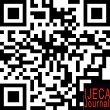The Existence and Education of Ceramic Craftsmen Society of Polutan Village in the 4.0 Industrial Revolution Era
Abstract
Keywords
Full Text:
DOWNLOAD [PDF]References
Aroengbinang.com. (n.d.). Keramik Pulutan. Direktori Pariwisata Indonesia, Kementerian Pariwisata Republik Indonesia. https://direktoripariwisata.id
Bashir, A., & Muhammad, H. T. K. (2015). Persepsi seseorang dalam memilih pekerjaan sebagai dosen perguruan tinggi negeri di Indonesia. Jurnal Manajemen Dan Bisnis Sriwijaya, 13(3), 397–412.
Fajrussalam, & Hasanah. (2018). Core Ethical Values of Character Education Based on Sundanese Culture Value. IJECA (International Journal of Education and Curriculum Application), 1(3), 15. https://doi.org/10.31764/ijeca.v1i3.2126
Hamdi Gugule, R. M. (2022). Studi pemetaan sosial terhadap pengembangan masyarakat sektor pendidikan di desa lingkar tambang kabupaten bolaang mongondow. JURNAL PARADIGMA: Journal of Sociology Research an Education, 3(1), 51–58.
Kristianus, M. (2018). The Educational Orientation of Boundary Communities at Sanggau Regency West Kalimantan. IJECA (International Journal of Education and Curriculum Application), 1(2), 92. https://doi.org/10.31764/ijeca.v1i2.2148
Laloan, J. J. N. (2017). Kajian Masyarakat Pulutan Sebagai Perajin Keramik Untuk Meningkatkan Ekonomi Keluarga (Studi Kasus Ibu Rumah Tangga Sebagai Perajin Keramik Tradisional Di Desa Pulutan Kecamatan Remboken). Jurnal Civic Education: Media Kajian Pancasila Dan Kewarganegaraan, 1(2), 70. https://doi.org/10.36412/ce.v1i2.503
Mentah, K. B., Kegagalan, A., & Keramik, P. (2006). Karakterisasi Bahan Mentah dan Analisa Kegagalan Produk Keramik. (Uli K dan Mumu K). TORSI, 4(2).
Mesra, Umaternate, F. (2021). Application of the Learning Model “Baca Dulu” Break Out Class Daring and Luring as an Effort to Overcome the Various Obstacles of Online Learning During The Covid-19 Pandemic at UNIMA Sociology Education Study Program. Proceeding ICHELSS 2021, 639–645. http://journal.unj.ac.id/unj/index.php/hispisi/article/view/22394
Mesra, R., Lamadirisi, M., & Fathimah, S. (2021). Fungsi Pasar Sapi/ Blante Bagi Masyarakat Minahasa. Jurnal Socius: Journal of Sociology Research and Education, 8(2), 73. https://doi.org/10.24036/scs.v8i2.227
Miles, H. (1992). Qualitative Data Analysis: A Sourcebook of New Method. Terjemahan Tjetjep Rohendi Rohidi. Analisis Data Kualitatif: Buku Sumber tentang Metode-metode Baru. Universitas Indonesia (UI-PRESS).
Muhlis, & Norkholis. (2016). Analisis Tindakan Sosial Max Weber Dalam Tradisi Pembacaan Kitab Mukhtashar Al-Bukhari (Studi Living Hadis). Jurnal Living Hadis, 1(2), 242. https://doi.org/10.14421/livinghadis.2016.1121
Murdiyanto. (2020). Metode Penelitian Kualitatif (Teori dan Aplikasi disertai Contoh Proposal). In Bandung: Rosda Karya. Yogyakarta Press. http://www.academia.edu/download/35360663/METODE_PENELITIAN_KUALITAIF.docx
Raharjo, T., Rangkuti, N., Pojoh, I., Harkantiningsih, N., Papua, K., Mts, S. M. P., Maiti, Bidinger, & Yustana, P. (2018). Buku Panduan Analisis Keramik. In Journal of Chemical Information and Modeling (Vol. 53, Issue 9). http://repository.isi-ska.ac.id/3228/2/MENGENAL KERAMIK.pdf
Sugiyono. (2010). Metode Penelitian Pendidikan Pendekatan Kuantitatif, kualitatif, dan R&D. Alfabeta.
Sugiyono. (2011). Metode Penelitian Kuantitatif Kualitatif R&D. Alfabeta.
Susmayanti, R. (2012). Hukum Pemerintahan Daerah : Sistem Pemerintahan Desa. Faculty of Law, Universitas Brawijaya. http://www.lycksele.se/biblioteksguiden/modul6/modul6.htm
Tommy, P., & Mandey, S. L. (2009). Karakteristik Masyarakat Desa Pulutan Kabupaten Minahasa Sebuah Pendekatan Survei. In Jurnal Megadidma (Vol. 2, Issue 3, pp. 207–226).
Udin. (2010a). Hubungan antara tingkat pendidikan dan jenis pekerjaan dengan partisipasi masyarakat dalam pembangunan di Desa Jetis. Universitas Sebelas Maret.
Udin, K. A. (2010b). Hubungan antara tingkat pendidikan dan jenis pekerjaan dengan partisipasi masyarakat dalam pembangunan di Desa Jetis Kecamatan Jaten Kabupaten Karanganyar tahun 2009/2010. Library.Uns.Ac.Id.
Wati, A. F., Erwan, E. Y., Azizah, N., & PamelaJurdilla. (2019). Analisis Industri Keramik di Indonesia. Teknik Kimia, 1–18.
WIBAWA, M. dkk. (2018). Perancangan Identitas Visual Kampung Wisata Keramik Dinoyo Malang. Sekolah Tinggi Informatika Dan Komputer Indonesia.
Widyarthara, A. (2019). Konsep Perancangan Arsitektur Keramik milik Departemen Perindustrian dengan nama Perusahaan Daerah Keramika Yasa pada tahun 1957 . Setahun kemudian , masyarakat Dinoyo 210 pengrajin se Wilayah Malang Raya ; kemudian menurun hingga dibawah produk kerajinan. 3, 1–10.
Yana, D. (2014). Potensi Kerajinan Keramik Dalam Seni Tradisi Pertunjukan Indonesia. Panggung, 24(4). https://doi.org/10.26742/panggung.v24i4.131
DOI: https://doi.org/10.31764/ijeca.v5i3.11067
Refbacks
- There are currently no refbacks.
Copyright (c) 2022 Maria Katje Tupamahu, Kevin Hermanto Tupamahu, Rose Amnah Abd Rauf, Romi Mesra

This work is licensed under a Creative Commons Attribution-ShareAlike 4.0 International License.
IJECA (International Journal of Education and Curriculum Application) already indexed:










___________________________________________________________________
| |
____________________________________________________________________
IJECA Publisher Office:







.jpg)




